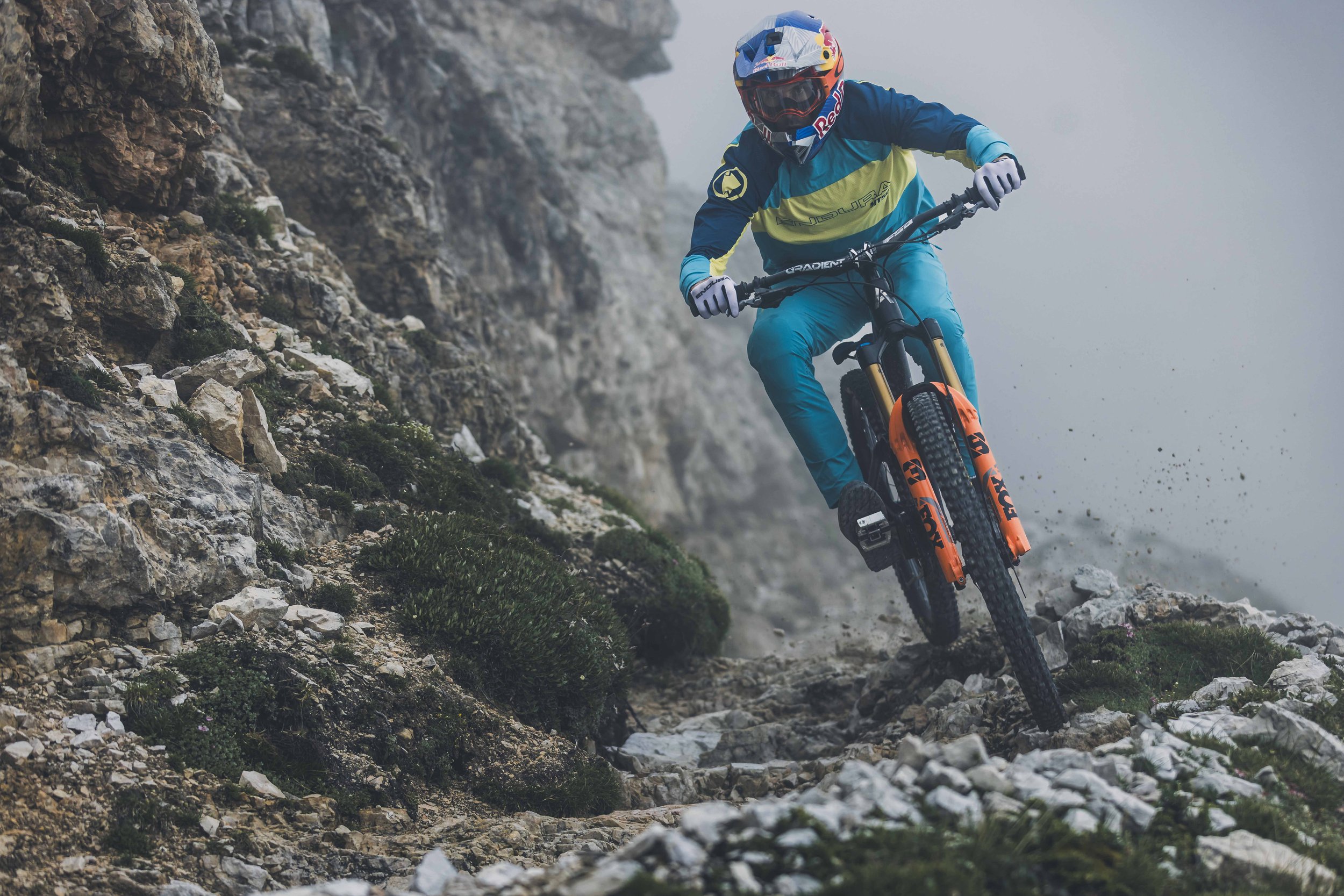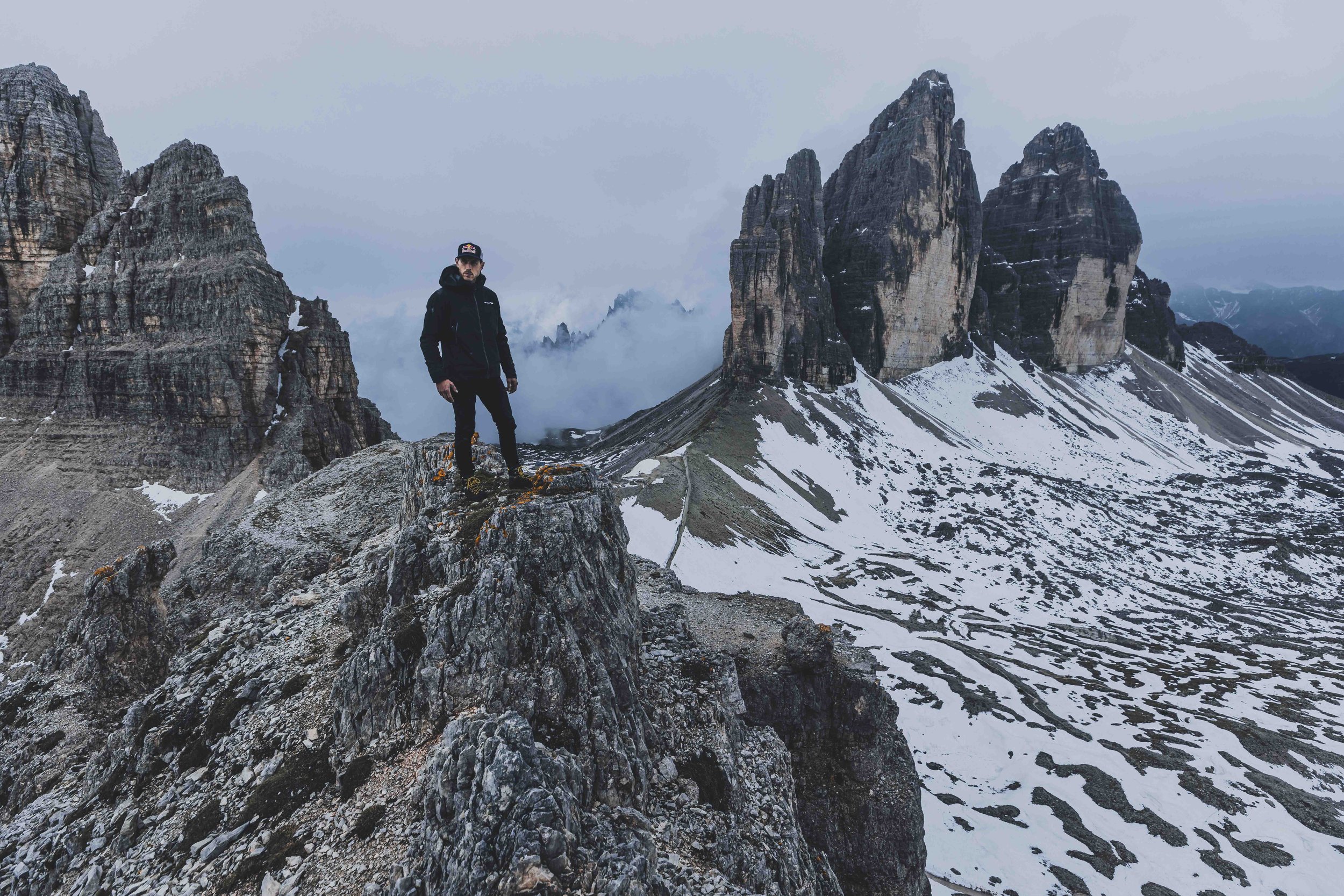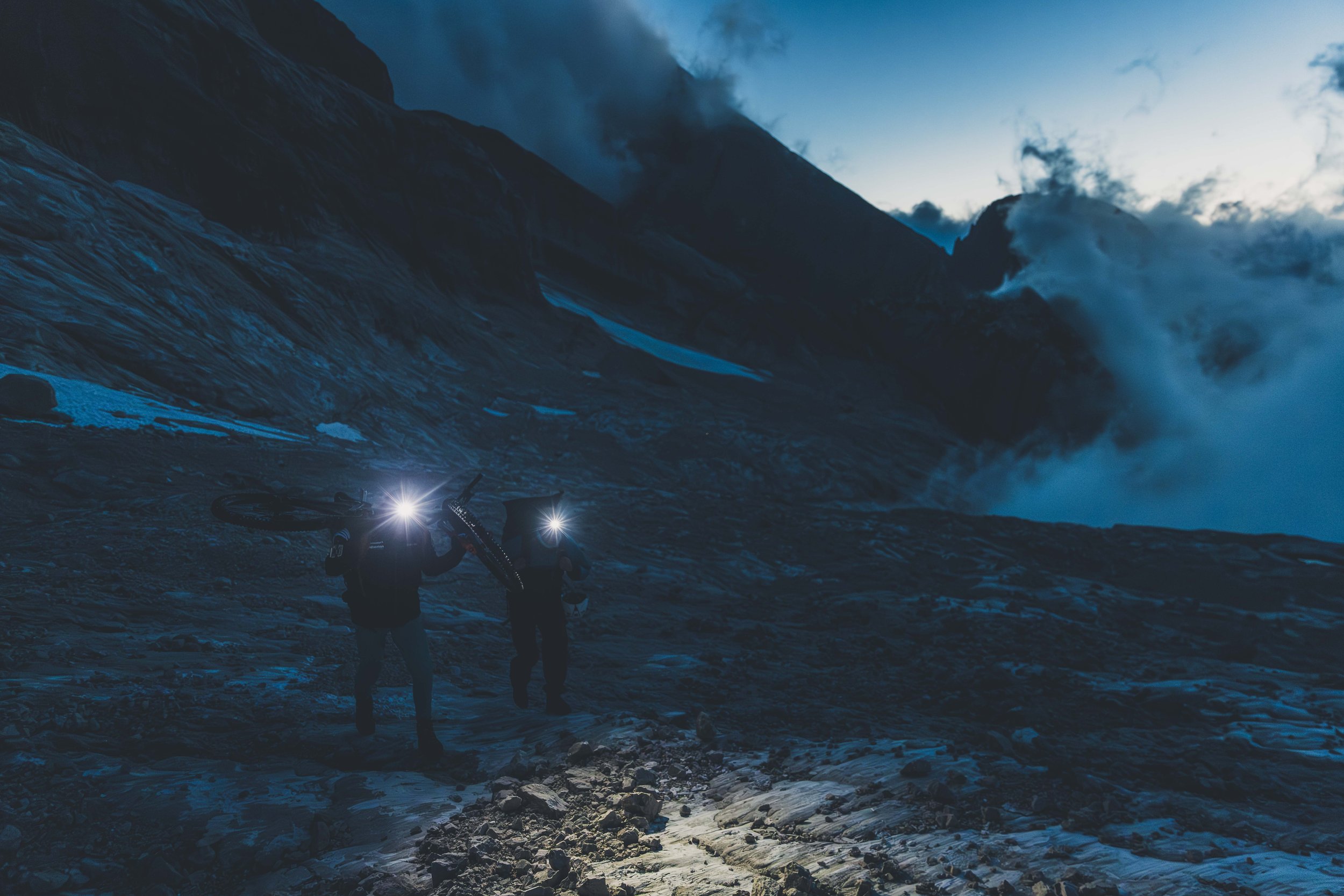Ridgeline IV: The Dolomites
The Dolomites are like no other place on earth, and arriving there, seeing how the mountains tower over you from the valley floor is as intimidating as it is impressive.
When we first ventured out there, none of us knew what to expect. The trip's success would depend solely on how far we were willing to push ourselves for the next leg of the Ridgeline series. As it turned out, we would end up pushing ourselves further than ever for what was by far the most physically and mentally demanding project to date… and we loved every minute of it.
We wrapped up our week of filming, not even sure if we’d captured enough, so seeing this one come together as spectacularly as it has couldn’t have been more rewarding.
Shouts to the entire team, who gave their all to make this possible.
Chapter 1: Scouting
The original Ridgeline resulted from Gee's desire to push himself and the sport's progression in the most spectacular way possible. After over twenty years of racing bikes, The Ridgeline offered Gee a blank canvas to express his riding as he saw fit, no longer confined by pre-determined terrain and race tape.
Since then, there have been two more additions to the Ridgeline series - The Knife Edge and Ridgeline II - The Return, both unique and with their fair share of ups and downs. Each addition to the Ridgeline series has provided invaluable lessons and perspectives to carry into the next, and what is earned in producing one of these projects far outweighs the project's success.
Over the last few years, the mountains of North Wales have shown us what is possible, and they couldn't have set us up better to take things worldwide, with the original vision remaining the top priority - pushing mountain biking bigger and further than ever, and doing so in spectacular fashion.
As we brainstormed ideas for the next leg of the series, the concept's true beauty and potential became apparent. Ultimately, all that is required is a mountain bike and a willing crew; with that in place, nothing is off-limits. With planet Earth as our playground, we considered the next location, which we discovered is an inspiring process, as we pondered on Namibia's vast, open deserts, Northern Norway's towering fjords and Kazakhstan's less-trodden mountain ranges.
One way or another, we landed on The Dolomites, where work soon began back in June, as usual - with a scouting mission, but this time around, things would be different. At home, among humbler peaks, a relatively short hike could find us summiting any potential location within an hour; arriving in The Dolomites, we quickly realised this wouldn't be the case. The sub-thousand-metre peaks we were used to back in Wales, normally accessible via some kind of footpath or farmer's track, had been replaced with 2,500-metre-plus monstrosities, none offering an easy route to the top.
The first couple days of scouting were essentially write-offs: it was too hard to get anywhere. We wanted to go beyond where bikes had been before, which meant we weren't looking for the obvious - we were looking for lines most people wouldn't even consider as rideable.
We quickly learned that trying to convey what we were looking for to local guides would be a challenge, notably down to the fact that their perceptions of what's possible on a bike differed vastly from Gee's - we soon learned, though, that if we were told, "there's nothing to ride up there", that was probably exactly where we needed to go.
If we were to find terrain that hadn't been ridden before, we'd have to stray from the beaten path, and eight-hour hike days soon became the norm, which quickly took their toll when coupled with 3000-metre ascents and knee-deep snow. Each day was a physical challenge like no other. The real battle, however, was mental; with no straightforward route to our intended destinations, the only way up and down was through fierce determination. On the lower mountain, the hiking was manageable, but as soon as you hit snow level, things became significantly more difficult.
Step by step, as one foot was placed in front of the other, we buried our minds elsewhere and did our best to forget about the physical strain. Forcing our minds to drift elsewhere, as our bodies pushed on, worked to some extent, but relief was temporary.
Each new day was more challenging than the last. The climbs were relentless, and we often would summit only to find we had wasted our time - perhaps it wasn't quite what we had expected, or we had gone the wrong way and were on the entirely wrong peak.
As energy levels and morale faded, we took time to remind ourselves of why we were doing this. The inspiration for the Ridgeline series is to take mountain biking further than it has ever been. We realised that, to do this, we'd need to be willing to do things nobody has done before. This was enough to reset our mindset and inject energy and reason back into the trip. Sure enough, as we tackled summit after summit, more positives began to present themselves.
The last couple of days offered the first real glimmers of potential, and although mostly obscured in snow, we began to make out what looked like rideable lines on distant cliff faces.
If you weren't looking for them, you probably wouldn't have noticed them, but Gee had a vision in his mind, and that's all he needed.
Ignorance was bliss on that first scouting trip, and only afterwards were we made aware of some of the dangers we had narrowly avoided - one slip on the side of a Via Ferrata would have meant certain death, and avalanche risk was a constant factor... but the mountains showed mercy on that first trip, and we weren't about to push our luck on the second.
Chapter 2: Filming Week
A month later, we arrived back in Italy for a week of filming - this time, much more prepared and attentive to the risks that would present themselves. Along for the ride was Brodie Hood - a member of the Lochaber Mountain Rescue team, and he also happens to be very handy behind a camera. His big mountain experience would be an invaluable asset on this trip, and when we learned of how he'd recently returned from a project on the summit of Everest, we knew he was the man for the job.
The reality of filming in this environment is that there will always be a high degree of risk involved, but equipped with harnesses, helmets, and various other safety mechanisms, our small team could rest assured that we'd done our part to manage things the best we could. The next challenge would be getting all the kit up the mountain.
Between us, we had a bike, riding gear, cameras, climbing equipment, and enough food and water to sustain us all for a day in the mountains. Things had been hard enough on the first trip, and we were carrying a fraction of the load. Fortunately, accompanying us in Italy again was Jamie Robertson - a longtime friend of Gee and a man who can be trusted with anything logistical - this time around, that meant helping with the load, and believe us, the extra set of hands was appreciated.
Even with Jamie on porter duties, the most challenging aspect of this project was simply getting to it. This time around, locations were already scouted, and we knew our routes, which saved a great deal of time - now, deeper into summer, the snow had also melted, cutting our commute time down by at least half. Still, with several locations dotted around The Dolomites, there was a lot to tick off, and that meant a sequence of very long days.
Without looking back at my photos, it's hard to differentiate between each day. Conscious of our limited time in The Dolomites, we were eager to squeeze as much as we could out of each waking hour.
We would rise at dawn, spend all day climbing and filming on the mountain, and seldom finish before sunset. Back in civilisation, we'd grab a quick dinner (assuming any restaurants were still open) and seize the opportunity to ingest as many calories as possible, ready to do it all again tomorrow.
For the most part, we made good use of our time - which, in this kind of environment, isn't easily done. All the driving, hiking, and climbing to get us and our gear in and out of the locations took up the majority of the trip. This left us with only about 15% of our total waking hours available to shoot Gee.
The trip wasn't without setbacks. Things are constantly changing in the mountains, especially the weather. There were a couple of occasions where we found ourselves dashing for the lower ground as thunderstorms rolled in to put an abrupt end to play; when all the metalwork around you starts humming, and your hair stands on end, it's time to get yourself off the mountain!
On day two, filmer and FPV drone operator Will Evans had to pull out after a pre-existing knee injury became too painful to continue with the gruelling pace of the project. This left us a man down until we could draft in another filmer, Matt McCormick, from Innsbruck. On day four, Matt's first day on the project, a closed mountain road meant our planned location was off the cards, and with our last-minute plan B not working out, we lost an entire day, cutting our already sparse shoot days down to five.
This was the first project where the act of shooting had not been the first priority - for myself or any of the crew. The logistics of being in these locations and your heightened attentiveness to the risks around you mean that you use a lot of time, and physical and mental energy just being there. At times, I would find myself helping Gee with his bike on a cliff edge, taking care of carabiners, or helping with various pulley systems.
Shooting, we constantly had to keep our wits about us. When you're staring down a lens, lining up a shot, it's far too easy to forget you're standing on the edge of a 500-metre cliff-face, even if you are strapped into a harness. Gee didn't have that luxury, with the exception of one particularly challenging ridge. For this one, Brodie created a pulley system that allowed him to test the line while attached to a harness. Without it, if Gee was to slip up, he would simply tumble off the mountain... once comfortable, he was out of the harness, and ready to go.
On previous projects, we'd learned that there's never any need to shoot anything more than necessary. We would aim to capture each shot in as few takes as possible, eliminating the need for Gee to put himself in any more danger than needed. The other upside to this was that despite our relatively small shooting windows, we could smash out a lot of filming in a short period, which was vital if we were going to make a film out of all this.
Wrapping up our time in The Dolomites, we weren't even sure if we'd captured enough, but we knew we'd left nothing on the mountain. It had been an intense week and, still buzzing off of the adrenaline, the crash wouldn't hit until we got home and safely back to sea level. It had been a blur, and there was a hell of a lot to process.
The lessons and experiences taken from our time there are invaluable as we look towards the next chapter – and the next seemingly impossible Ridgeline – wherever that might be.
Thank you to Red Bull UK for commissioning this story.
Watch Ridgeline IV: The Dolomites below.
















